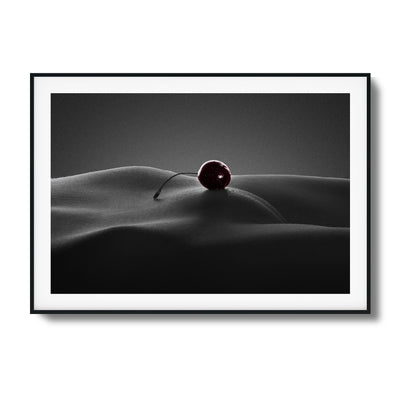Table of Contents
- Introduction
- Why Art Preservation Matters
-
Cleaning Your Framed Art
- Dust Regularly
- Avoid Harsh Cleaners
- Handle with Care
-
Protecting Your Art from Sun Damage
- Avoid Direct Sunlight
- Use Window Coverings
- Rotate Your Art
-
Best Practices for Hanging Framed Art
- Choose the Right Spot
- Use Proper Hanging Hardware
- Keep It Level
-
Storing Framed Art
- Store Vertically
- Avoid Damp Areas
- Cover Your Art
- Final Thoughts
Framed art is more than just decoration—it’s an investment that adds beauty and personality to your space. Whether it’s a cherished family photo, a piece of fine art, or a print that you love, taking care of your framed art ensures that it remains vibrant and intact for years to come. Here’s a simple guide to help you preserve your framed art.
Why Art Preservation Matters
Art is sensitive to its environment. Factors like light, humidity, and even how you clean your framed pieces can impact their longevity. Understanding how to care for your framed art can prevent damage and keep your pieces looking as fresh as the day you hung them.
Cleaning Your Framed Art
When it comes to cleaning framed art, less is more. Here’s how to keep your artwork clean without causing any damage:
-
Dust Regularly: Dust your framed art lightly with a soft, dry cloth or a microfiber duster. Avoid using a damp cloth, as moisture can seep into the frame and damage the artwork.
-
Avoid Harsh Cleaners: Never use window cleaner, ammonia, or any other harsh chemicals on the glass or acrylic covering your art. These can strip the protective coating or cause discoloration over time. If you need to clean the glass, use a soft cloth slightly dampened with water and wipe gently.
-
Handle with Care: When cleaning or moving your art, always hold the frame from the sides, never from the top. This reduces the risk of the frame coming apart or damaging the corners.
Protecting Your Art from Sun Damage
One of the biggest threats to framed art is exposure to direct sunlight. UV rays can cause colors to fade and the paper or canvas to deteriorate. Here’s how to minimize sun damage:
-
Avoid Direct Sunlight: Try to hang your art in a spot that doesn’t get direct sunlight. If that’s not possible, consider using UV-protective glass or acrylic, which can block most of the harmful rays.
-
Use Window Coverings: Curtains, blinds, or UV-filtering window films can help reduce the amount of sunlight that reaches your art.
-
Rotate Your Art: If you have a collection of art, consider rotating the pieces on display. This reduces the amount of time any one piece is exposed to light.
Best Practices for Hanging Framed Art
How you hang your art can affect its longevity. Here are some tips to ensure your framed pieces stay secure and look great:
-
Choose the Right Spot: Avoid hanging art above heat sources like radiators or fireplaces, as the heat can cause warping or discoloration. Similarly, keep framed art away from areas with high humidity, like bathrooms, unless it’s specifically designed to withstand those conditions.
-
Use Proper Hanging Hardware: Always use picture hooks or anchors that are appropriate for the weight of your art. This not only keeps your art safe but also protects your walls from damage.
-
Keep It Level: Use a level when hanging your art to ensure it’s straight. This prevents stress on one side of the frame, which can cause it to warp over time.
Storing Framed Art
If you need to store your framed art for any period, proper storage is key to preserving its condition:
-
Store Vertically: Store framed art vertically, as laying it flat can cause warping or pressure on the frame. Place cardboard or padding between each piece to prevent scratches or damage.
-
Avoid Damp Areas: Store your art in a cool, dry place. Avoid basements, attics, or any area where humidity is a concern, as moisture can cause mold or mildew.
-
Cover Your Art: Use a breathable cloth to cover your framed art in storage. This will protect it from dust and debris without trapping moisture.
Final Thoughts
Taking care of your framed art is essential to preserving its beauty and value. With the right care, your art can remain a vibrant part of your home for years to come. Whether it’s a cherished family heirloom or a piece you picked up on vacation, these simple maintenance tips will help ensure your framed art stays in top condition.
FAQ Section
Why is it important to preserve framed art?
Preserving framed art is crucial because environmental factors like light, humidity, and cleaning methods can significantly affect the artwork's longevity and visual quality. Proper care helps prevent fading, warping, and deterioration, ensuring that your pieces maintain their beauty over time.
What are the best materials to use for cleaning framed art?
For cleaning framed art, it’s best to use a soft, dry cloth or microfiber duster for dusting. If you need to clean the glass or acrylic, use a slightly dampened soft cloth with water. Avoid any harsh chemicals or cleaners that could damage the artwork or its frame.
How can I protect my art from sunlight?
To protect your art from sunlight, avoid placing it in direct sunlight. If this isn’t possible, consider using UV-protective glass or acrylic. Additionally, using window coverings like curtains or blinds can help reduce sun exposure.
What are the best practices for hanging framed art?
When hanging framed art, avoid areas above heat sources and high humidity. Use appropriate hanging hardware based on the art’s weight, and ensure the piece is level to prevent any stress on the frame.
How should I store framed art if I need to keep it away for a while?
Store framed art vertically to prevent warping, placing padding between pieces to avoid scratches. It’s essential to keep the storage area cool and dry, avoiding humid spaces to prevent mold or mildew. Cover the art with a breathable cloth for protection against dust.










